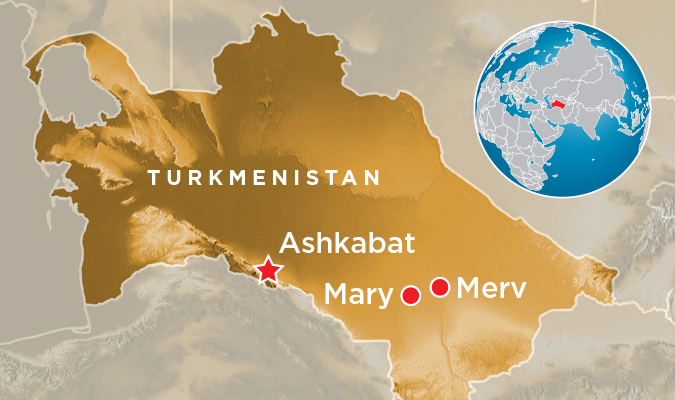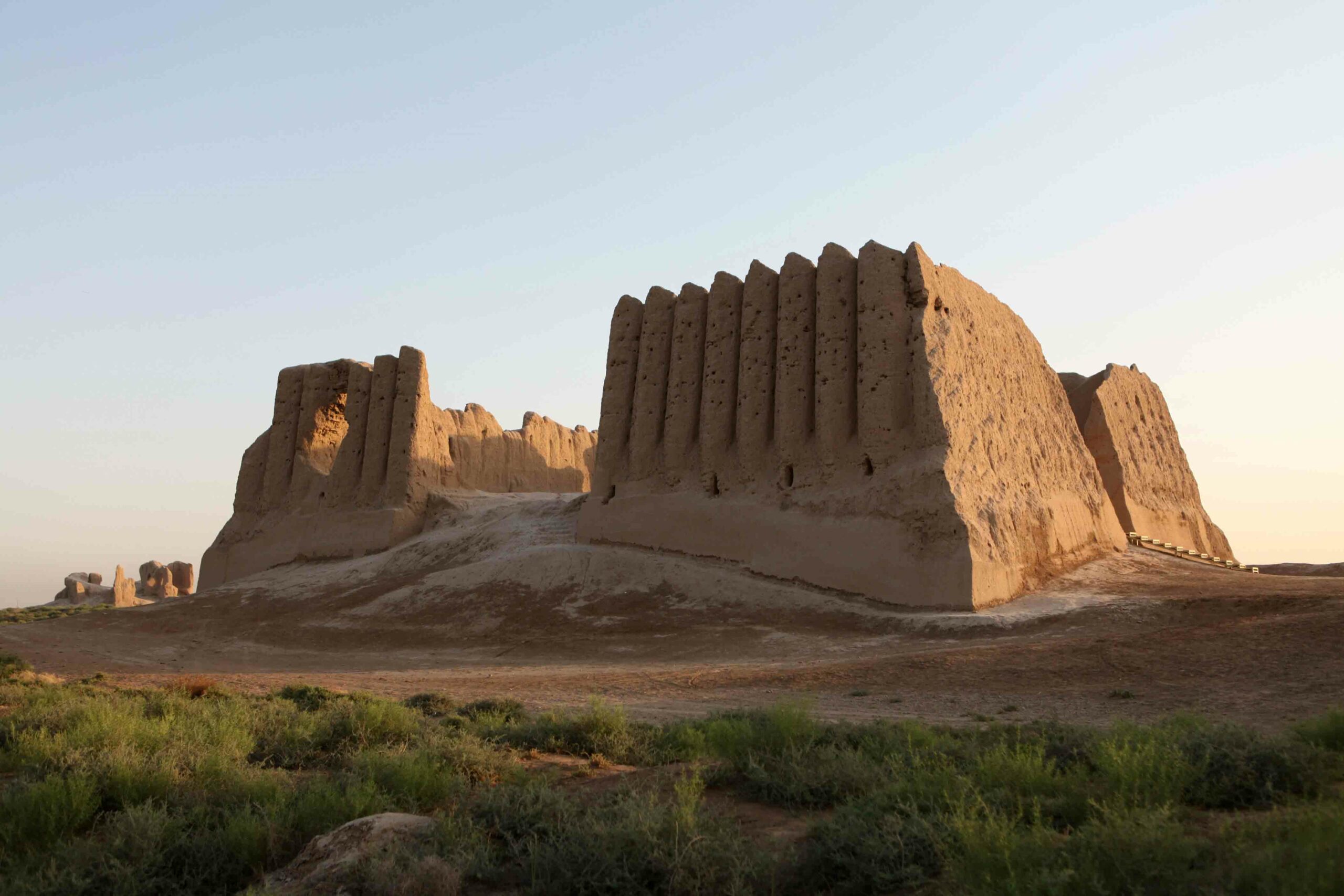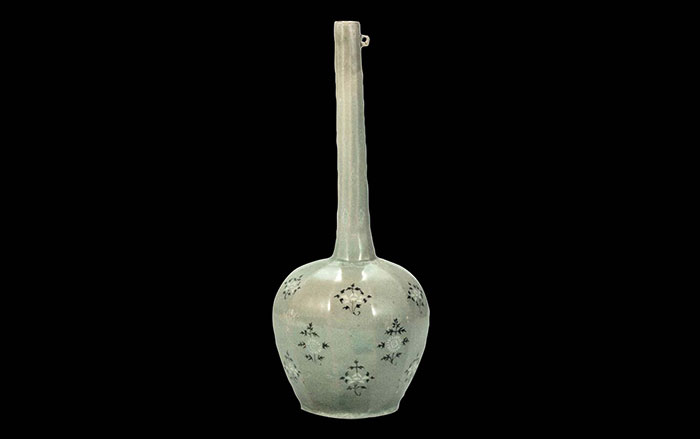
Over many centuries, a settlement on an oasis along the Silk Road grew into one of the world’s great metropolises. Ancient Merv was a nexus of commercial goods, languages, ideas, and religious beliefs connecting Europe, Africa, and the Far East. The site was first settled in the fifth century B.C. by the Achaemenids, whose empire stretched from the Caucasus to Egypt. Their settlement, Erk Kala, was succeeded by Gyaur Kala, which was built by Greek Seleucids under Antiochus I (r. 281–261 B.C.). Over the next millennium, Merv became a major economic and political center for a succession of empires. By the eighth century A.D., the Islamic Abbasid Caliphate had established Merv as their eastern capital. They called it Sultan Kala and turned it into one of the world’s largest urban centers. In the late Middle Ages, maritime trade gradually supplanted the traditional land routes of the Silk Road, and Merv began a slow decline. The city was devastated by a Mongol attack in 1221, a blow from which it never really recovered.
Virtually all the material dating to the Erk Kala and early Gyaur Kala periods is buried up to 60 feet under the surface. “Realistically, with our attention to modern stratigraphic excavation, the time needed for such a deep excavation—even if the health and safety issues could be overcome—would make it very difficult to undertake,” explains Tim Williams, director of University College London’s Ancient Merv Project. However, researchers have used aerial photography to capture the entire site, particularly the remains of the medieval city of Sultan Kala. Says Williams, “It’s enabled us to understand the layout of the city, down to the detail of individual houses and buildings, in a way that a surface survey could never do.”
THE SITE
Visiting Turkmenistan requires advance planning, and travelers are encouraged to sign up with one of the international tour groups leading trips to Merv. Before you travel to the site, Williams recommends a visit to the national museum in the capital, Ashgabat, for an overview of the history of the region, and to the museum in Mary, the nearest city to Merv, which houses artifacts uncovered at the site. In addition to ruins of fortifications dating to the Erk Kala and Gyaur Kala periods, visitors will see the remains of impressive medieval earthen buildings called koshks. The largest of these, the Great Kyz Kala, lies just outside Sultan Kala’s western wall, and was likely built between the eighth and the ninth centuries as a fortified palace.

WHILE YOU’RE THERE
Take a day trip out to the site of the Parthian city of Nisa, which was occupied from roughly the third century B.C. to the third century A.D. Continue your immersion in the past by booking a tour to ride the famous Turkmen horses in the foothills of Kopet Dag, the breathtaking mountain range that separates Turkmenistan and Iran.











